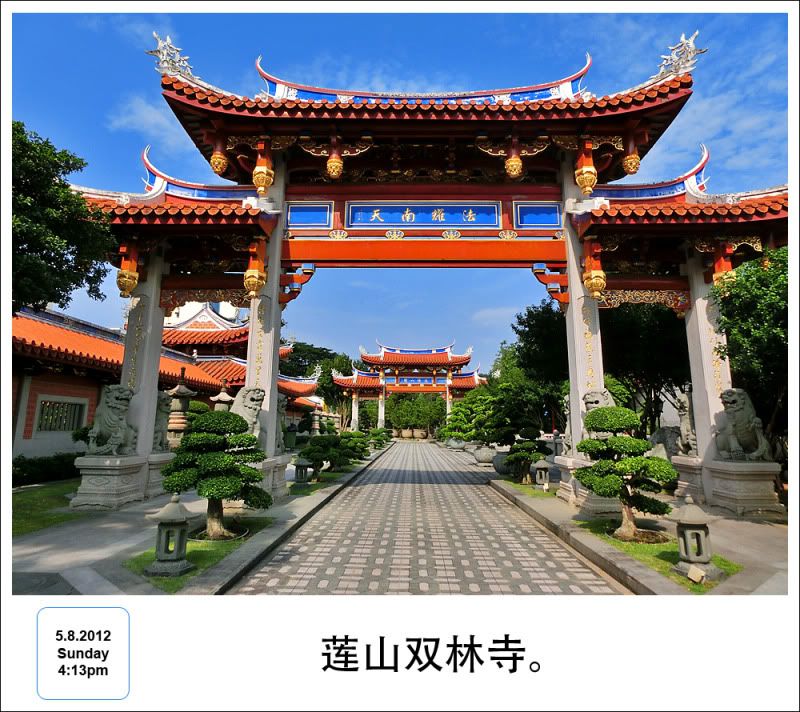
This used to be my playground. From age 8 to 28, I stayed at Block 195 Kim Keat Avenue, which is right next to Siong Lim Temple. That’s how I used to spell the temple’s name until 莲山双林寺 ‘Lian Shan Shuang Lin Monastery’ (Twin Groves of the Lotus Mountain Temple) emerged as its official name when I Googled today.
Back in those days, the temple grounds provided much enjoyment and playthings for us neighbourhood kids. It used to have a huge pond which we used to come by often to catch guppies and small shrimps as pets. The place was also overgrown with wild balsam plants and vegetation, providing endless hours of acquiring butterfly and spider specimens in addition to our aquatic keepsakes.
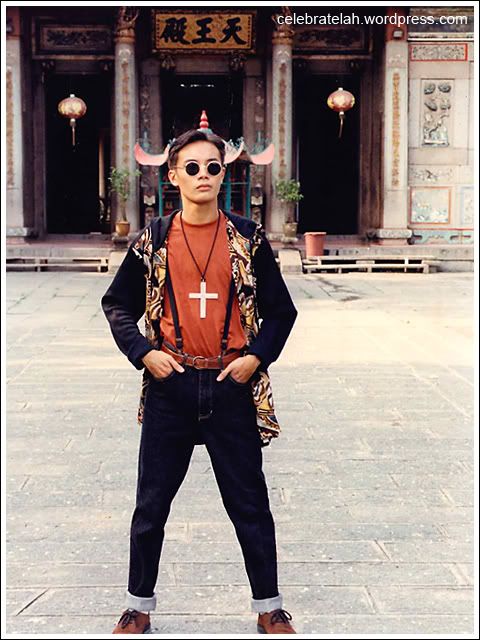
Photo circa 1991, age 17. Wearing a big cross to the temple… what was I thinking?!
The other thing I remember fondly of the temple is the gong. Everyday at 6am, the temple bell will chime and its solemn signal of a new day accompained my morning routine of getting ready for school.
To this day, whenever I hear the timbre of a Chinese monastic gong, I’m brought back to those teenage reveries. But how things have changed. The temple ground is beyond recognition to me now. These old pics, abett only partial snippets, showed how the temple looked like back in the early 90s.
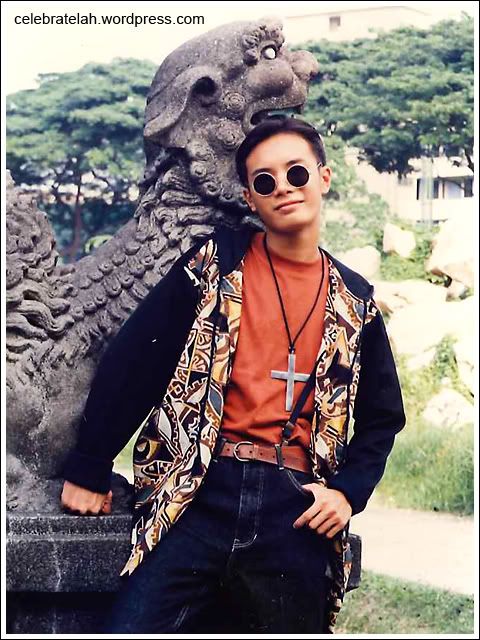
It is good that some things never changed… my displaced fashion sense. What I wore for today’s photography outing to the temple continues to be comic. I used to be very skinny and favoured long-sleeved garbs to hide the twigs I had for arms. That explains the hooded jacket I had on despite the tropical heat!
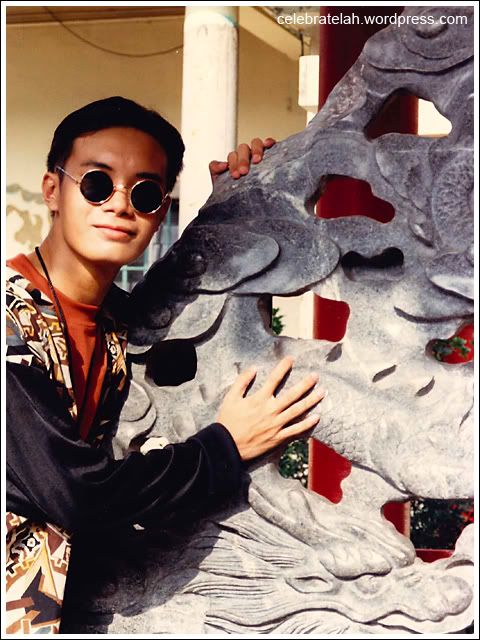
LOL at the hilarious Puyi sunglass that was all the rage back then.
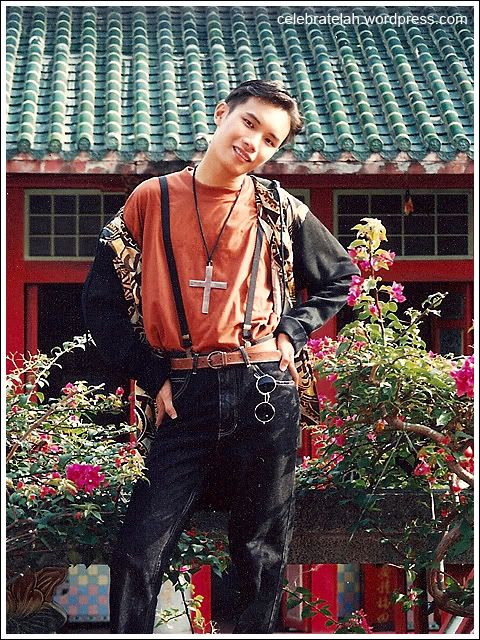
Wahahahaha… this pose is retro and revolting, it makes the hair on my arms stand!
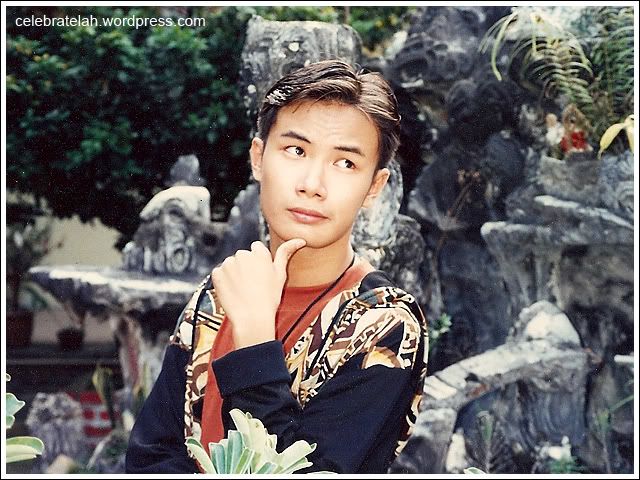
Looking back at these old photos taken at Siong Lim Temple, I wanna dig my eyes out. Such a poser! And an obiang (awful) one at that. This series of photos were taken with my ex-secondary school classmates who initiated me into camwhoring.
There were many things I used to be able to do here but were amiss. I used to be able to take photos in the temple, but now, photography is prohibited in the monastery. I used to interact with the surroundings, today I just admired how neat and proper everything looks.

The organic pond I grew up with used to be just a huge hole dug into the ground and home to scores of tortoises, fish and small prawns. Now it is a much smaller fountain feature enlivened only by water spewing from dragon-headed spouts.
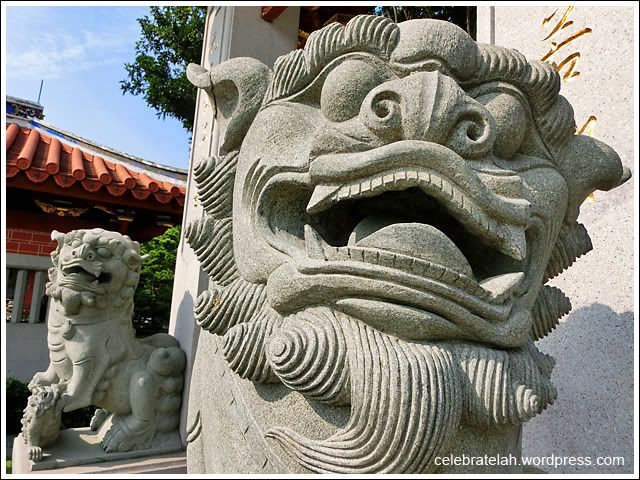
New, plumper stone lions replaced the old, skinnier ones. The yesteryear gate guardians were green in colour with a rotatable sphere in the clutches of the male lion. The new male has no movable ball. It is the belief that visitors can change their luck for the better by physically spinning the ball.
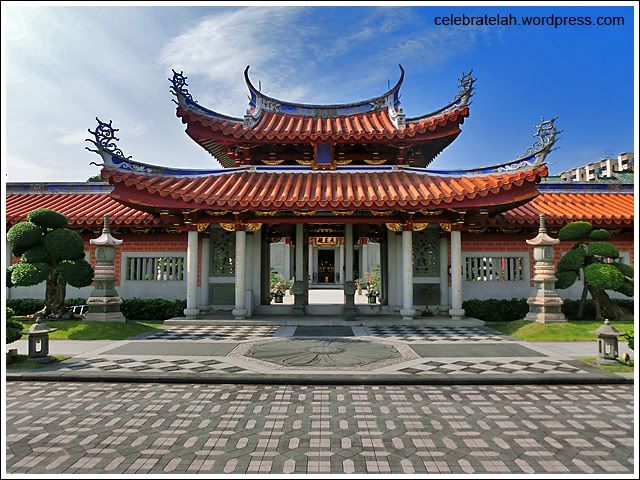
Holding in heaven. The entrance used to be just a brown dirt road with rough-hewned concrete slabs leading a path to the temple’s entrance. Now there’s this elaborate wall that creates a courtyard before the entrance.
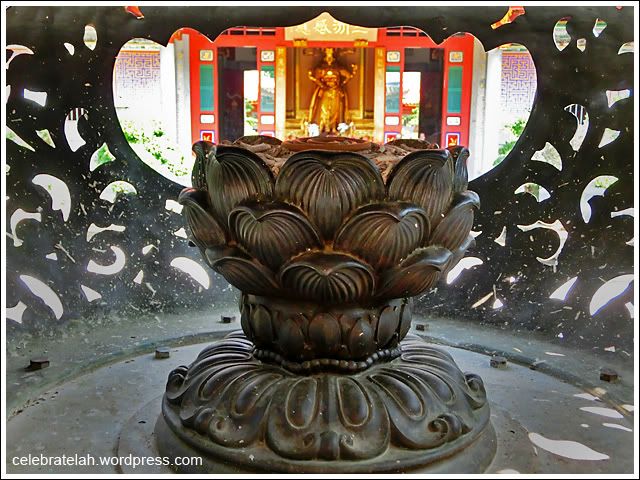
Bronze lotus-shaped incense holder within a huge censer in the central courtyard that separates the entrance prayer hall from the inner Buddhist sanctum.
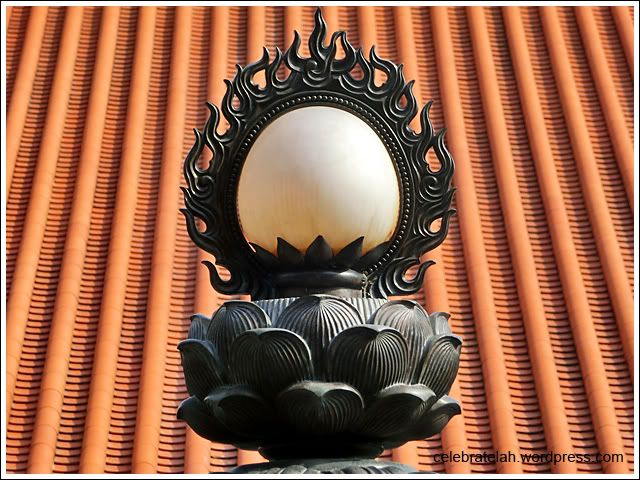
Burning pearl adornment atop the censer that symbolises the sun.
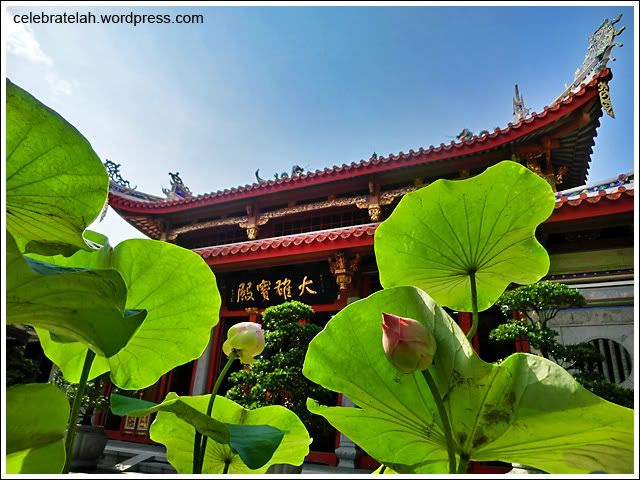
The grand Mahavira Hall of the inner sanctum framed with the inspiration that christened the monastory’s name.

The bamboo-carved Chinese characters reads 惜福 (xi fu), which is a call for gratefulness of one’s blessings and to treasure them, but not be indulgent in the good fortunes. There were quite of few of these tablets hung at the door.

佛在心中莫浪求。When we have God in our hearts, whether it is Buddha, Jesus, Allah or Khrisna, happiness and contentment need no longer depend on external torrents of possessions, needs and desires. This shot is an attempt to reflect that message by using one of the bamboo tablets as a frame.
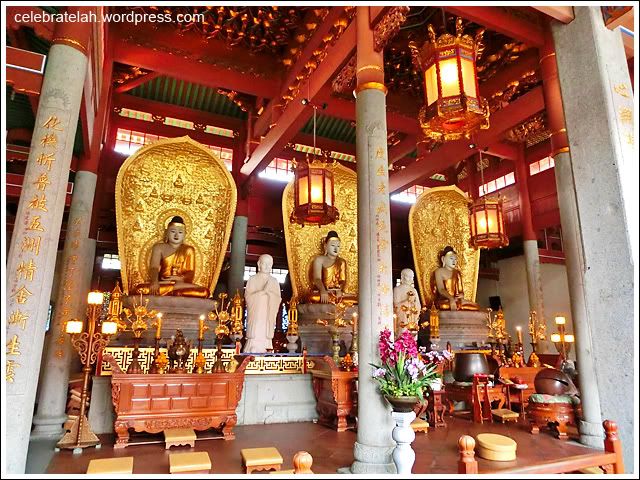
Interior of the Mahavira Hall. Photography strictly prohibited inside but it’s okay to take a shot at the doorway.

Buddhism believes that time is cyclical in nature where mortals are trapped in the eternal cycle of reincarnation until one attains enlightenment.
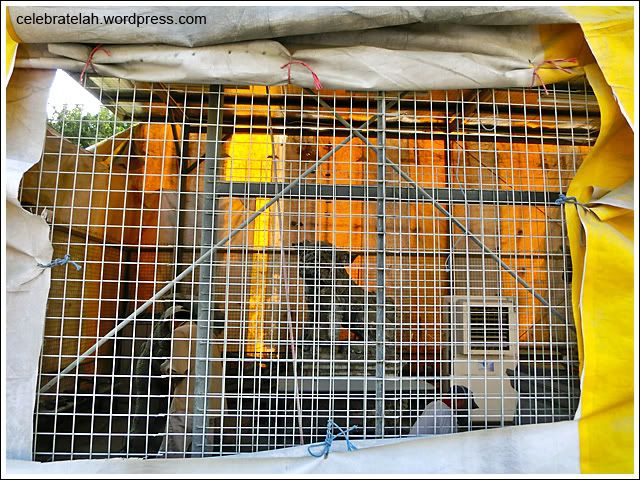
A glimpse of the original guardian lions through a makeshift workshop by the side of the temple. Built in 1902, Lian Shan Shuang Lin Monastery is the oldest Buddhist temple in Singapore and is gazetted a National Monument. The first phase of the temple’s restoration commenced in 1991 and completed in 2002.
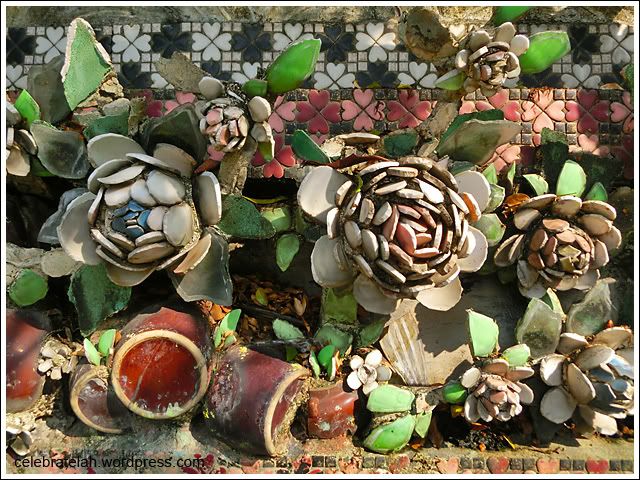
I was so excited at the unexpectedly rare opportunity to see part of the decorative 剪粘 (pronounced ‘Jian Nian’, meaning cut and paste) roof ridges at an intimate range. It was taken down for restorative work and I could study closely what I’ve seen from afar for many years. The artform is also called 剪花 (Jian Hua – cut flower) and sometimes 鱼皮像 (Yu Pi Xiang – fish scale sculpture).
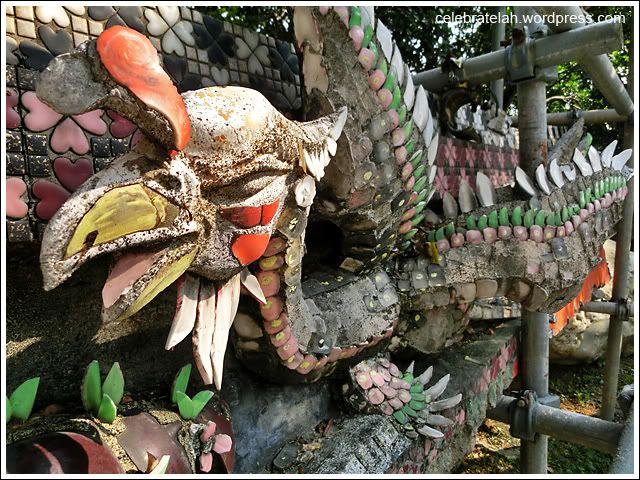
Jian Nian sculptures frequently depict celestial beings and auspicious icons in Chinese legends and mythology and are used to decorate the roofs and eaves of buildings, usually temples. Originating from the Ming Dynasty Wanli period (circa 1600), great masters are not only skilled at the laborious production method where porcelain shards are painstakingly cut and pasted into moulds of sticky rice lime, but must be knowlegeable about fabled characters and their symbolism as well.
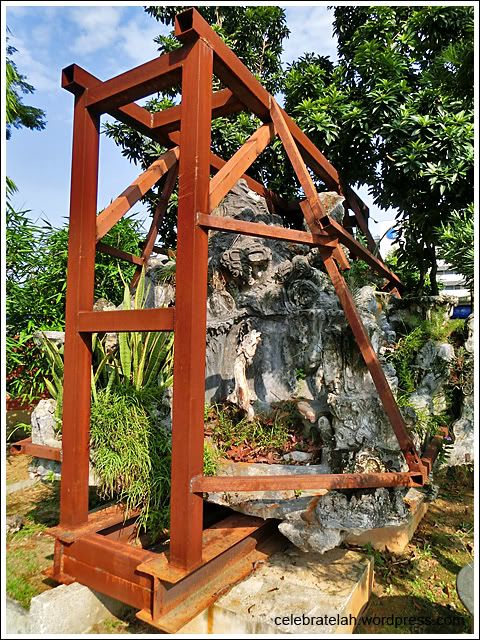
This boulder was the backdrop in the retro photo where I placed a thumb on my chin earlier in this post. It used to sit atop a well in the inner courtyard of Shuang Lin Monastery. Looks like it will be given a second life seeing that it has been ‘saved’ for restoration (I think).

Dragon Light Pagoda. This is a relatively new addition to the temple site.
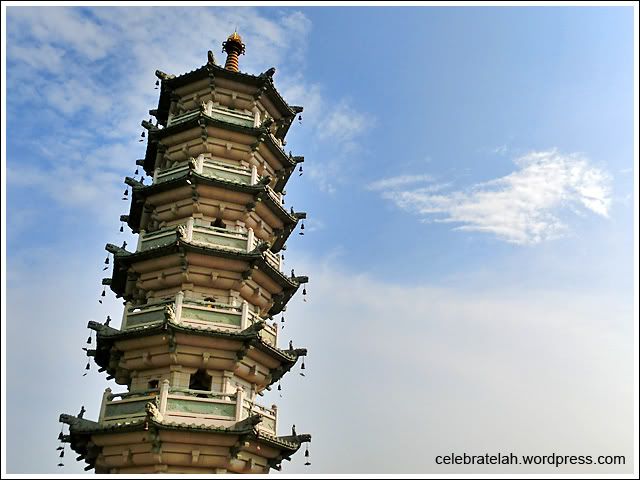
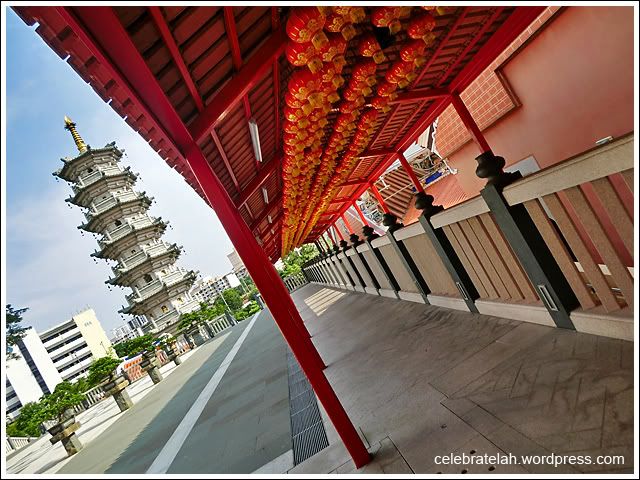
View of the pagoda from the Guan Yin Dian (Godess of Mercy Hall). The religious site is made up of three temples with Shuang Lin Monastery in the middle and flanked by Guan Yin Dian to the right and Cheng Huang Miao to the left. See map at the end of this post.
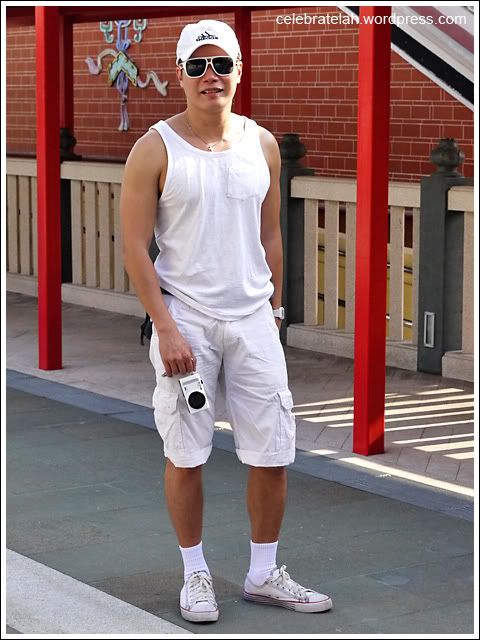
Age 38. I’ve also gone through some renovations over the last two decades from a brown stick insect to a white… hmm… dugong?
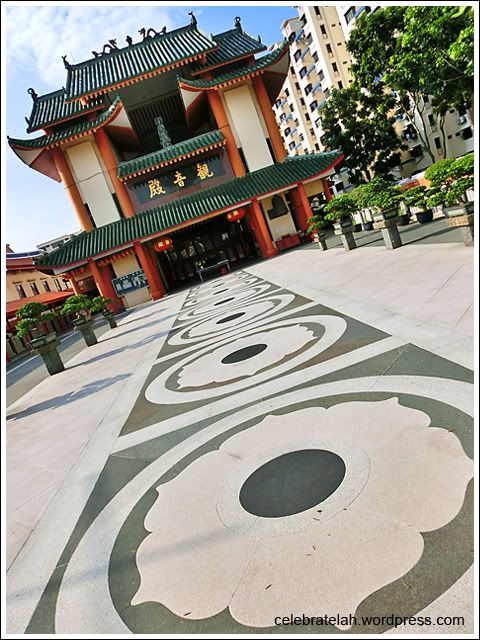
Lotus motifs leading to the entrance of Guan Yin Dian.

The centrepiece is a 11.2m bronze statue of the thousand-hands-and-eyes Guan Yin (Goddess of Mercy).

The Goddess of Mercy is the bodhisattva of compassion and her thousand hands and eyes manifestation represents her all-giving, all-seeing nature.
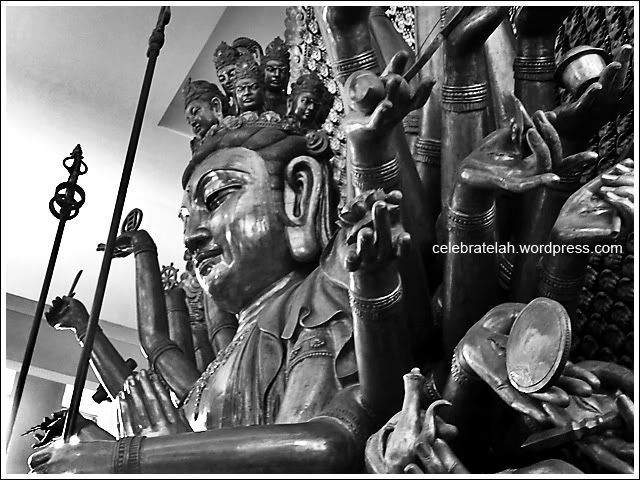
The deity’s actual name is 观世音 (Guan Shi Yin) – 观 (Guan) translates as observe / view / watch / see; 世 (Shi) meaning the world; 音 (Yin) being the word for sound or voice. So the goddess’ name means someone who monitors the world of its lamentations and offering help.
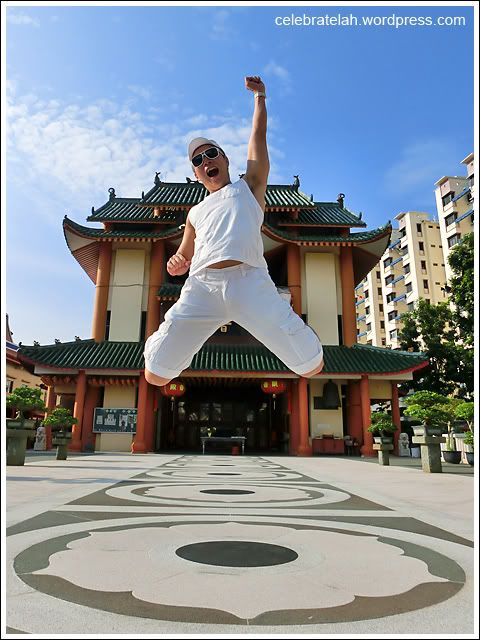
A leap back in time!
It felt rather surreal being here so many years apart. It’s a pity I arrive only about an hour before closing time and didn’t get to explore more familiar grounds. Besides, the last section of Shuang Lin Monastery was hoarded up for renovations.
Nonetheless, there was still enough points of interest to explore for a late-afternoon photo outing. Do check out this old, well, now it’s new playground of mine…
Getting Here : From Toa Payoh MRT and Bus Interchange, take feeder bus nos. 232, 237, or 238 (less than 10 minutes journey)
Address : 184E Jalan Toa Payoh, Singapore 319941
Tel : +65 6259 6924
Opening Hours : 8:30am – 5:00pm daily (Free admission)
I absolutely love your blog. This specific post really made me giggle!
ReplyDeleteThanks for visiting and glad you enjoyed a chuckle with this one. Heh heh... :o)
Delete